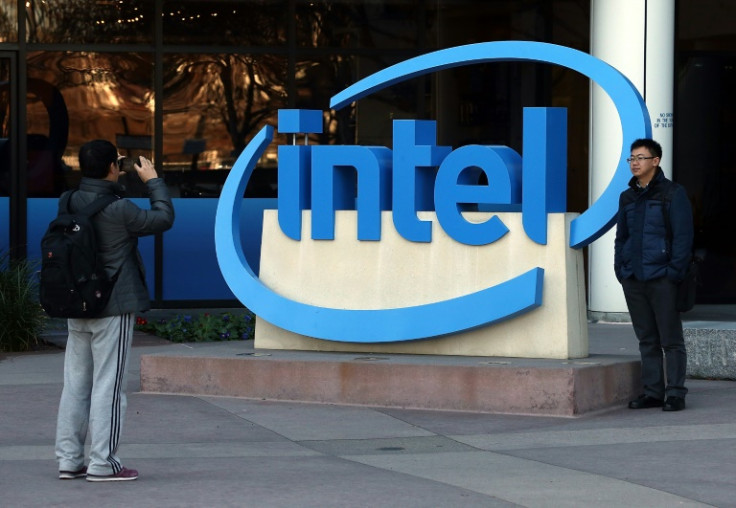Intel Seeks Assistance From Apple, Others in Desperate Bid to Reclaim Chip Throne
CEO Tan is also seeking partnerships with firms like Apple and TSMC

Intel, once the unchallenged king of microprocessors, is facing its biggest challenge yet. In a desperate move to regain dominance in the fiercely competitive chip market, the tech giant is seeking a much-needed lifeline from former rivals and industry heavyweights, such as Apple.
This isn't just a business deal; it's a high-stakes play to reclaim a lost crown and solidify a future in a landscape it once commanded.
A Government-Backed Lifeline
Intel Chief Executive Lip-Bu Tan is actively working to obtain the financial backing and client pledges essential for the processor manufacturer's recovery. Individuals with knowledge of the situation report that technology firms such as Apple and Taiwan Semiconductor Manufacturing are among those the chip giant has contacted regarding capital injections or production agreements.
Intel is in talks with Apple about securing an investment in its business, according to Bloomberg News. The news comes days after Nvidia announced it was investing around $5 billion in the embattled chipmaker https://t.co/e9jfBsmMDG pic.twitter.com/Jr8qxC8TV8
— Reuters (@Reuters) September 25, 2025
The fundraising drive was already underway before US President Donald Trump expressed interest last month; however, sources close to the talks say the pace dramatically increased after the American government acquired a 10% stake in the business.
The administration under President Trump has been exerting pressure to boost Intel's declining performance. For many months, Commerce Secretary Howard Lutnick and other government officials have encouraged technology corporations to collaborate with the firm, which had been the world's top chip manufacturer for decades until it fell behind rivals like TSMC.
The consistent stream of news reports has sparked a growing conviction among financiers and technology experts that the firm can shed its outdated reputation and regain importance, supported by the broad push for a more diverse and reliable chip production network.
On Thursday, the stock value climbed 8.9%, reaching its highest price in over a year. However, uncertainties remain over the company's ability to deliver the manufacturing and quality standards required by buyers for the latest semiconductors, as well as precisely how to execute a long-discussed separation of its factory business.
The $7 Billion Vote of Confidence
Japan's SoftBank committed $2 billion (£1.50 billion) to the technology company in August, coinciding with its discussions with the administration. That move was followed earlier this month by a $5 billion (£3.74 billion) investment from Nvidia, the most valuable firm globally, with its arrangement also requiring Intel to develop new components compatible with Nvidia's processors.
Both Masayoshi Son, CEO of SoftBank, and Jensen Huang, CEO of Nvidia, have publicly and clearly backed the administration's technology strategy, which prioritises the expansion of domestic chip production and accelerates the development of the data centres essential for the artificial intelligence sector.
JoAnne Feeney isn’t enthusiastic about Intel. The Advisors Capital Management portfolio manager tells Bloomberg Tech the stock price has too many assumed outcomes built in https://t.co/9rflrEGgWn pic.twitter.com/qf4eGJOTpb
— Bloomberg TV (@BloombergTV) September 25, 2025
Bloomberg previously disclosed Intel's attempts to secure funding from Apple. According to individuals familiar with the situation, Intel CEO Tan also met with Apple CEO Tim Cook this year and engaged in talks with C.C. Wei, his equivalent at TSMC, regarding a potential alliance or joint business effort.
The Hunt for Cash: Why Intel Still Needs More
Despite the recent financial injections, Intel, which posted a $3.7 billion (£2.77 billion) loss in the first half of 2025, is believed to still require more funding. Crucially, it must also secure new clients— both those who will purchase its finished semiconductors and those who will utilise its manufacturing plants to produce their own chips.
5 years ago today, Apple broke up with Intel for Apple Silicon
— Apple Design (@TheAppleDesign) June 22, 2025
And today, Everyone would agree that THERE IS NO BETTER LAPTOP THAN A MACBOOK pic.twitter.com/aYF5hpfBL7
According to an August report by The Wall Street Journal, Intel had paused its major fundraising plans earlier in the year. However, sources familiar with the situation suggest the company might restart those efforts before year-end, potentially drawing in private-equity and other large institutional investors.
Manufacturing's Future: The Spin-Off Debate
For an extended period, Intel has faced demands from investors and market watchers to separate its manufacturing division and instead concentrate on chip design; however, CEO Tan has insisted that the fabrication business is crucial for US national security.
Before Tan was hired as chief executive in March, Frank Yeary, Intel's board chairman, had been actively advocating for the company to sell off its manufacturing unit. To reassure clients who design their own chips, the company has stated it is establishing an internal separation (a 'firewall') between its design and fabrication divisions, aiming to encourage these customers to partner with Intel for manufacturing confidently.
For many years, Apple relied on Intel processors (CPUs) for its Mac computers before switching a few years ago to chips of its own design. Apple-designed chips are also utilised in all iPhones.
Originally published on IBTimes UK



















